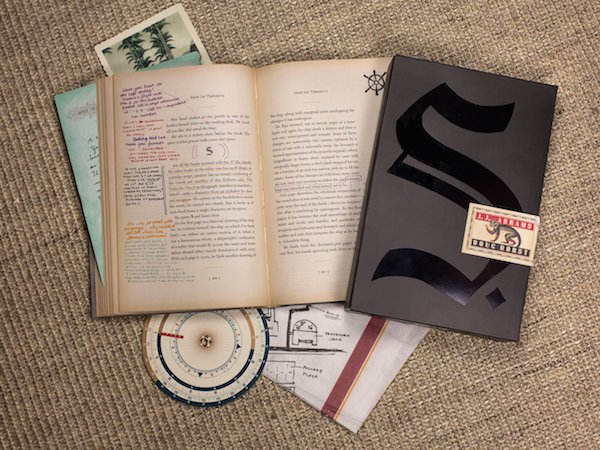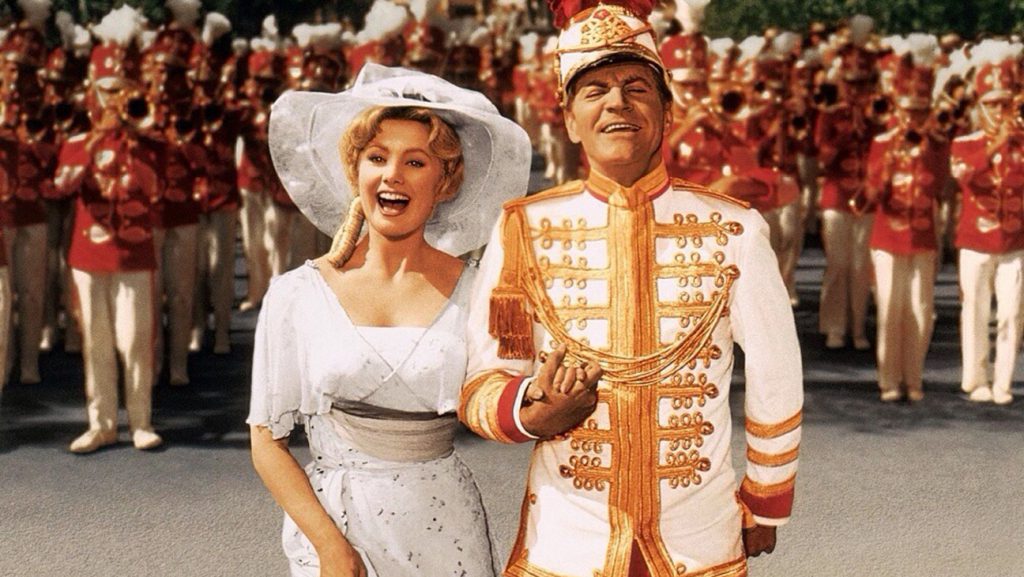Literary Inception: Seven Books Found Within Books
Great storytellers create worlds for readers to escape within. Sometimes these worlds contain multiple layers, and you may find yourself in a story within a story. In some cases, we’re talking an entire book inside of the one you’re reading. (Yo dawg, we heard you liked books, etc.) Here are seven great examples:
S. – J.J. Abrams and Doug Dorst
The book itself is Ship of Theseus, the final work by V.M. Straka, a fictional political, prolific, and enigmatic author. The experience of reading S. is so much more. The book comes stuffed with odds and ends: letters, postcards, photos, even a decoder ring. Dive into the text and you’ll see multicolored notes in the margins: a correspondence between Jennifer and Eric, two academics who are analyzing the text while getting to know each other through the annotations. While trying to decipher the true identity of Straka and the secrets within his novel, the duo’s own story unfolds in the margins, resulting in a complex, singular reading experience.

The Blind Assassin – Margaret Atwood
Set in the 1930s and ‘40s, Atwood’s Booker Prize-winning novel contains many layers and threads for a reader to untangle. The story begins with Iris narrating the death of her sister Laura, who drove off a bridge. Then it shifts to Laura’s posthumously published novel (titled The Blind Assassin), in which two lovers meet in secret and collaborate on a science fiction novel. The third section returns to Iris, and various events leading up to her sister’s death. The book is one great literary jigsaw puzzle, with seemingly disconnected pieces all falling into place within the final chapters.

The Neverending Story – Michael Ende
Have you ever read a story you loved so much, you wished you could become part of it? That’s exactly what happens to Bastian in The Neverending Story when he finds a mysterious book and becomes thoroughly engrossed in it while hiding in his school’s attic. As he reads of Atreyu’s heroic quest to save his dying world Fantastica and its Childlike Empress, Bastian eventually discovers that he himself is a character in the book. You may have watched the 1984 adaptation (haven’t we all wished we could ride Falkor the Luckdragon at some point in our childhood?), but the beloved movie is only loosely based on this novel, with the book continuing the story long after the events in the film.

If on a Winter’s Night a Traveler – Italo Calvino
The premise of Calvino’s novel seems simple enough: a reader tries to read a book. In fact, the main character is “you,” the reader. It gets more complicated from there. Each chapter has two sections: the first is written in second person and deals with the process of reading and the life events in the reader’s life; the second is the opening chapter of a new book the reader discovers. The first chapters of each separate novel connect the narrative of the main story, but in the end, the multiple interruptions, interpretations, and hidden means could be considered an ode to reading itself.

House of Leaves – Mark Z. Danielewski
One day L.A. tattoo shop apprentice Johnny Truant discovers notes to a manuscript, The Navidson Record, which his mysterious neighbor Zampano left behind after his death. As Johnny organizes and deciphers the notes, an account emerges of the Navidson family and their unusual house, which takes on supernatural properties like internal dimensions that don’t match external ones and the appearance of mysterious doors and hallways. Through footnotes, shifting narratives, spiraling text and other inventive techniques, the reader travels with Will Navidson through the strange dimensions of his house and with Johnny through the shadowy corners of his mind, each man navigating his own disorienting, treacherous path. Reading this novel is the literary equivalent of exploring a maze; prepare yourself to get lost in its dark twists and turns.

Cloud Atlas – David Mitchell
Structured as six novellas in one—each with its own vastly different time, setting, tone, and genre—Mitchell’s ambitious tome really is a series of nesting dolls in story form. From a futuristic Korean society, to 1970s San Francisco, to Belgium in 1931, to a post-apocalyptic South Pacific island, the tales presented seem too disparate to have any connecting thread, yet each one fits into the other in unexpected and dazzling ways. Some of the narratives may be more challenging to read than others depending on your literary proclivities, but whether you marvel at its structure or the stories themselves, rest assured that you’ve never taken a multifaceted literary journey like this one.

Pale Fire – Vladimir Nabokov
Decades before contemporary novelists played with unusual storytelling structures came this novel by one of literature’s great voices. Nabokov’s postmodern work is a 999-line poem by fictional author John Shade, with a forward and extensive commentary by fictional academic (and Shade’s deranged neighbor) Charles Kinbote. The dual narrative becomes a darkly comic mystery as the poem’s origin and interpretation are manipulated within Kinbote’s footnotes. Kinbote is an unreliable narrator and we wouldn’t have it any other way as the story unfolds through a labyrinth of clever syntax and sly puns within its metafictional construct. Nabakov was a wordsmith unlike any other and many consider this to be his greatest work, even as Lolita remains his most popular.

Margarita Montimore
Margarita writes upmarket fiction and is represented by Victoria Skurnick at Levine Greenberg Rostan. She also transcribes and pokes fun at her old journal entries at The Diary Project. When not wrangling her ever-growing book and movie collections or feeding squirrels and chipmunks, she dreams of the day time machines are built so that she can return to the 1980s. Follow her on Twitter at @damiella.




